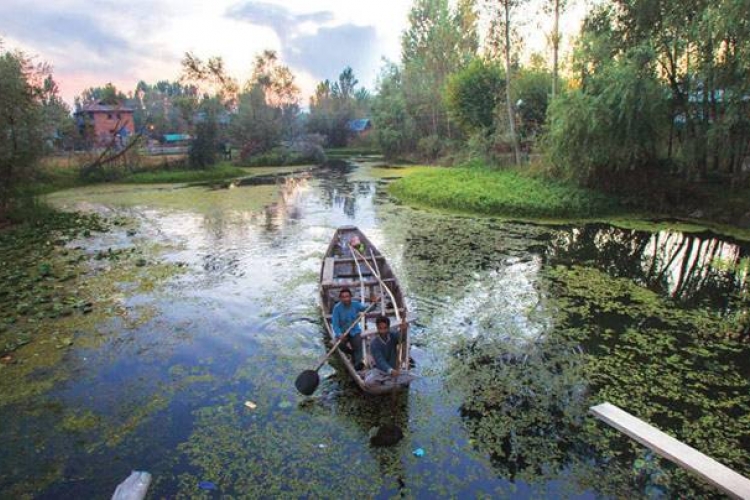Saving DAL LAKE
In News
The governor of Jammu and Kashmir approached navy seeking help to save the water body ,dal lake. Since the report from the former chief hydrographer cautioned that the water quality of the lake had detoriated due to intense pollution caused by untreated sewage and solid waste released into the water body.
Dal Lake
Dal is a lake in Srinagar , the summer capital of Jammu and Kashmir. The urban lake, which is the second largest in the state, is integral to tourism and recreation in Kashmir and is named the "Jewel in the crown of Kashmir"or "Srinagar's Jewel".The lake is also an important source for commercial operations in fishing and water plant harvesting.
Location and Topography
The lake is located in the Zabarwan mountain valley, in the foothills of the Shankracharya hills, which surrounds it on three sides. The shallow, open-drainage lake is fed by Dachigam-Telbal Nallah (with perennial flow), Dara Nallah and many other small streams. The complex land use pattern of the valley is reflected in the urbanised Srinagar in its north, with rice fields, orchards and gardens in the lower slopes, and barren hills beyond steep sloping hills. The flat topography also affects drainage conditions.
Environmental Degradation
The major environmental problem facing the lake is Eutrophication. Scientific research over the years also reveal that Telbal, Botkal, and sewage drains are responsible for a substantial influx of nitrogen and phosphorus into the lake. The Dal Lake has also been damaged extensively due to the part played by the local population. Continuous disposal of waste has severely depleted the lake’s water quality.
Ongoing PIL For Restoration of Lake
The PIL, filed in 2001, has resulted in a number of directives from the court to the funding and implementing agencies and the case is continuing.
The PILs have sought injunctions of the court for
1. setting up of an integrated ring sewage system encircling the Lake;
2.release of funds by the Government of India to undertake measures to check pollution and to
3.inaugurate a High Powered Committee to monitor proper utilisation of the allotted funds.
The committee is under obligation to post feedback of progression developments from time to time, directly to the Supreme Court.
The Report
It reported , “Encroachments of water channels and clogging have diminished the circulation and inflows into the lake, leading to the extensive growth of hyacinth”. It added that the depth of the lake had come down at many places and its total capacity had gone down to 40%. “The continuing night soil discharge from the 800 to 900 houseboats is causing extreme pollution,” it cautioned.
Governor’s Initiative
The Governor has appointed the Dredging Corporation as the nodal consulting agency to formulate a plan for dredging parts of the land masses in the interiors of the lake. The possibility of installing holding tanks and bio-digesters to make sure that houseboats do not discharge sewage will also be examined.
He had asked the Navy chief for a comprehensive bathymetric survey (measuring depth and mapping underwater features) of the Dal-Nageen water body to establish a benchmark database for deciding on the extent of dredging that needs to be carried out.
Measures taken so far
Under the National Lake Conservation Plan of the Ministry of Environment and Forests of the Government of India, funds were sanctioned for the conservation of the lake. The restoration and rehabilitation measures envisaged under the "Conservation and Management of Dal" are under various stages of implementation with the funds allocated by the Government of India for the purpose.
Some of the measures undertaken for rehabilitating the lake to bring it to its original eutrophication free status involved measures such as
- construction of siltation tanks, mechanical deweeding, regrouping of houseboats, deepening of outflow channel and removal of bunds and barricades, including some floating gardens.
- In addition, a moratorium has been imposed on new construction works close to the lakefront, including the building of new house boats.
- Resettlement plans for migrating the population from the lakefront have also evolved.
- The long-term development plans also deal with the re-afforestation of catchment area to reduce erosion movement and movement of silt and to regulate grazing by livestock.


 "UPSC-2026-PRELIMS COMBINED MAINS PROGRAMME" NEW BATCH STARTS WITH ORIENTATION ON JULY 7th,2025
"UPSC-2026-PRELIMS COMBINED MAINS PROGRAMME" NEW BATCH STARTS WITH ORIENTATION ON JULY 7th,2025 